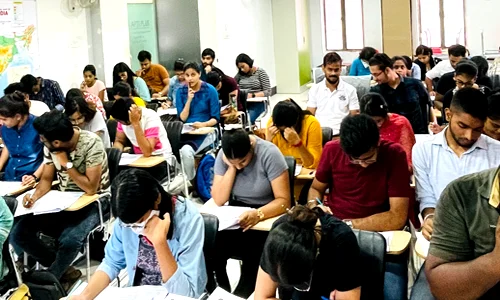



Ningaloo Reef in Western Australia has lost nearly 70 percent of its coral cover after an unprecedented marine heatwave. Mass death of key corals like Acropora has triggered a shift toward algae and sponges, exposing severe climate vulnerability and demanding urgent conservation and policy action.
Click to View MoreIn 2024, India recorded the largest absolute increase in greenhouse gas emissions globally, making it the third-largest emitter after China and the U.S. Despite this, India’s per capita emissions remained less than half the global average, reflecting relatively low emissions intensity. The rise was driven mainly by fossil fuel use in power generation, industry, and transport, along with methane from agriculture and deforestation. This highlights the challenge of balancing economic growth with climate responsibility.
Click to View MoreThe UNEP Emissions Gap Report 2025 warns that weak national pledges keep the world on a 2.3–2.5°C warming path. Global emissions rose 2.3% in 2024, widening the gap to the 1.5°C goal amid poor implementation, limited finance, and stalled G20 climate action.
Click to View MoreClimate change is increasing avalanche risks in the Himalayas. Rising temperatures and erratic weather destabilize snow and thaw permafrost, causing frequent avalanches. India must strengthen forecasting, disaster response, structural safeguards, and community preparedness to build resilience against this escalating climate threat.
Click to View MoreA recent scientific report warns that Earth is under severe climate distress, with 22 out of 34 key indicators reaching record highs. Rising global temperatures, greenhouse gas concentrations, ice melt, and extreme weather events signal that the planet is nearing critical tipping points. Despite growth in renewable energy, heavy reliance on fossil fuels continues, emphasizing the urgent need for rapid climate action to stabilize ecosystems and protect human and ecological well-being.
Click to View MoreIn 2024, global tree cover loss surged due to wildfires, with tropical forests burning 370% more than in 2023, releasing 3.1 gigatonnes of CO₂. Climate change and droughts intensified fires across the US, Canada, EU, and Asia, threatening biodiversity and ecosystems. In India, forest fires are increasingly severe, affecting forest health, wildlife, and local communities. Government measures include fire management, afforestation, and community engagement, while long-term strategies emphasize climate adaptation, monitoring, and resilience building.
Click to View MoreMajor meat and dairy companies emit more methane than the entire EU and UK combined, contributing significantly to global greenhouse gases. The top five producers release more emissions than major oil companies like BP and Shell. Methane from livestock, especially cattle, drives climate change and deforestation. Current industry solutions are insufficient, and urgent policy shifts toward emission targets, sustainable farming, and plant-rich diets are needed to meet climate goals.
Click to View MoreEarth has crossed its first climate tipping point, causing irreversible mass dieback of warm-water coral reefs. Record ocean temperatures have triggered historic bleaching, threatening marine life and human livelihoods, signaling urgent global action to reduce emissions and prevent cascading ecological disasters.
Click to View MoreGlobal warming and deforestation are leading causes of species extinction in India, impacting biodiversity, livelihoods, and climate stability. Addressing them requires strong conservation policies, sustainable development, and community participation.
Click to View MoreDeforestation and global warming are interconnected, threatening ecological and economic security. Clearing forests for development causes biodiversity loss and accelerates climate change, affecting vulnerable communities. Implementing legal frameworks and afforestation programs is challenging, requiring robust policy enforcement and community participation.
Click to View MoreA new study by experts forecasted global glacier erosion rates with unprecedented precision. The majority of glacial erosion occurs in areas with extensive current ice cover, including Alaska, the Canadian Arctic, Greenland, Scandinavia, and the southern Andes.
Click to View More
© 2025 iasgyan. All right reserved